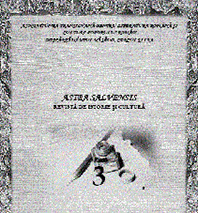Posibilitati de reconstructie nominala a populatiei tarii in epoca moderna pornind de la registrele parohiale de stare civila
In this chapter we have tried to present the data that we had available a demographic study of the based on the parish registers of civil status
Author(s): Vlad PopoviciSubject(s): History
Published by: Asociaţiunea Transilvană pentru Literatura Română şi Cultura Poporului Român - ASTRA
Keywords: population reconstruction; parish books; Năsăud; nineteenth century; archives
Summary/Abstract: The paper deals with the possibility of reconstructing the historical population of the Country of Năsăud (Transylvania, Romania) during the late eighteenth, nineteenth and early twentieth century, starting from the preserved parish registers. The first part underlines the state of research in Romanian historical demography, the importance of reconstructing historical populations and the general features of the envisioned sources. The main part of the paper offers an overview of the preserved parish registers for the Country of Năsăud, analysing the actual range of possible population reconstruction for each ethnicity and denomination. The region under study had an overwhelming Romanian population (over 90%), although Germans (Saxons), Jews and a handful of Hungarians were also present. This particular feature, combined with the fact that, being a border regiment area, most of the Romanians were Greek-Catholics, makes the reconstruction attempts easier. Problems are raised by two aspects. The first one concerns the Romanian Orthodox and the Hungarian Calvinist minorities scattered in very small communities all over the region, for which the parish registers are badly preserved or, sometimes, completely missing. The second aspect concerns more compact communities, like German (Catholics and Lutherans) and Jews, for which parish registers are preserved, but only for a few decades, allowing the reconstruction of only one generation. Beside these two problems, the time and resources-consuming character of the population reconstruction activities is also highlighted, and the conclusions point out not only the theoretical reconstruction possibilities, but also the necessity of involving local historians into this task, in order to ease and fasten the data entry operations from the archive documents into the database hosted by the Centre for Population Studies at “Babeș-Bolyai” University Cluj-Napoca.
Journal: Astra Salvensis - revista de istorie si cultura
- Issue Year: 2014
- Issue No: 3
- Page Range: 64-75
- Page Count: 12
- Language: Romanian

